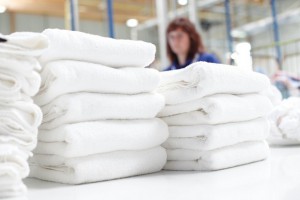Technical textiles are reported to be the fastest growing sector of the textile industrial sector. A technical textile is a textile that has been developed to meet the exacting specified high-performance requirements of a particular end-use other than conventional clothing and furnishings. In many cases, specially developed technical yarns are employed to support and reinforce the fabric properties.
Medical and Hygiene Textiles:
The largest use of textiles is for hygiene applications such as wipes, babies’ diapers (nappies) and adult sanitary and incontinence products. Nonwovens dominate these applications which account for over 23% of all nonwoven use, the largest proportion of any of the 12 major markets for technical textiles. The other side of the medical and hygiene market is a rather smaller but higher value market for medical and surgical products such as operating gowns and drapes, sterilization packs, dressings, sutures and orthopaedic pads. At the highest value end of this segment are relatively tiny volumes of extremely sophisticated textiles for uses such as artificial ligaments, veins and arteries, skin replacement, hollow fibres for dialysis machines and so on.
Transportation Textiles:
Transport applications (cars, Lorries, buses, trains, ships and aerospace) represent the largest single end-use area for technical textiles, accounting for some 20% of the total. Products range from carpeting and seating (regarded as technical rather than furnishing textiles because of the very stringent performance characteristics which they must fulfil), through tyre, belt and hose reinforcement, safety belts and airbags, to composite reinforcements for automotive bodies, civil and military aircraft bodies, wings and engine components, and many other uses.
Ecological Protection Textiles:
The final category of technical textile markets, as defined by Techtextile, is technical textiles for protection of the environment and ecology. This is not a well defined segment yet, although it overlaps with several other areas, including industrial textiles (filtration media), geotextiles (erosion protection and sealing of toxic waste) and agricultural textiles (e.g. minimizing water loss from the land and reducing the need for use of herbicides by providing mulch to plants).
This article comes from textilelearner edit released
